Silent Hill 2 Remake: When the Game Becomes Art
The world of the game continues to live outside the monitor even after the credits have started rolling. Not every game can boast of such an important feature and at the same time capture enough necessary information or even objects within the frame...
It should be noted that I hadn't played any of the Silent Hill games before, and the funny thing is that I could have easily passed by the remake if it wasn't for this poster...
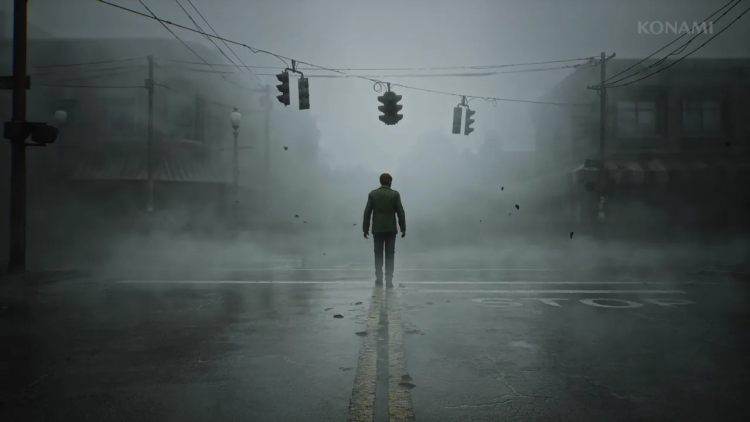
It so happened that my work is closely related to video games, and I saw this poster for the first time while covering some gaming event, I don't remember exactly which one. I have to say that I am a big Bladerunner fan, and this image gave me a kind of flashback...
The famous shot of Detective Kay arriving in New York. He doesn't know what awaits him here, whether he will get answers to his questions or die. He is shackled by his fear, but continues to walk slowly, while the visual reduction of Kay in the composition and the literal envelopment of him in emptiness clearly convey his personal feelings.
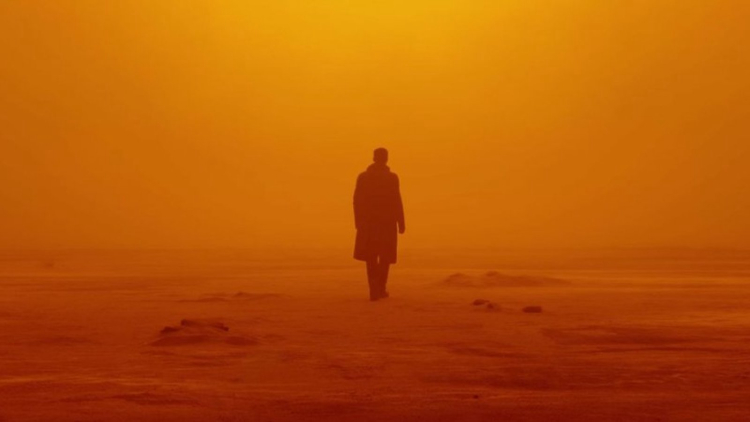
When I saw a similar technique on the poster for the remake of the second Silent Hill, I realised that this game would definitely have artistic value and pre-ordered it. Did I regret it? Looking ahead, definitely not.
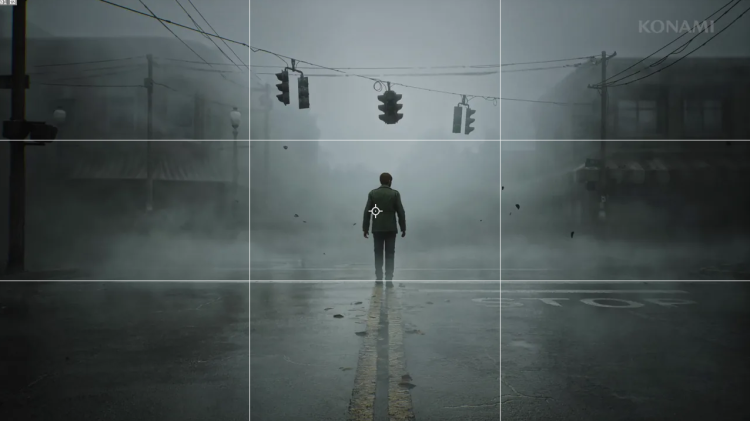
VISUAL IMMERSION
Silent Hill 2 resembles an empty canvas on which slow strokes are made. The game is obsessed with the changes and metamorphoses of its characters, which is why our attention is always held on their reactions. Always. And a little longer than you usually see in video games. This works because the characters go their own way and internal and local changes will always prevail over external ones, which ultimately makes the game much more focused on gradual immersion in the narrative.
Even though the camera is almost completely static, Silent Hill seems incredibly three-dimensional, thanks to perspective, silhouettes, colour segmentation, fog, and... of course, corridors. A lot of corridors, which are probably more necessary for the player than for the game.
And the bigger and more massive the environment around you, the more immersive it is. Do you remember how James was dissolved in the city at the beginning of the game? How much the crowding and fog visually immersed him. And everything looked like there was still a lot of free space behind the frame...

In the original game, the fog was a forced measure due to the technical limitations of the PlayStation at the time. But the developers managed to make the fog their main feature and weapon. You can't see anything literally a step away from you, which makes the feeling of uncertainty and fear much stronger. That's why I don't understand mods that remove fog from the game.
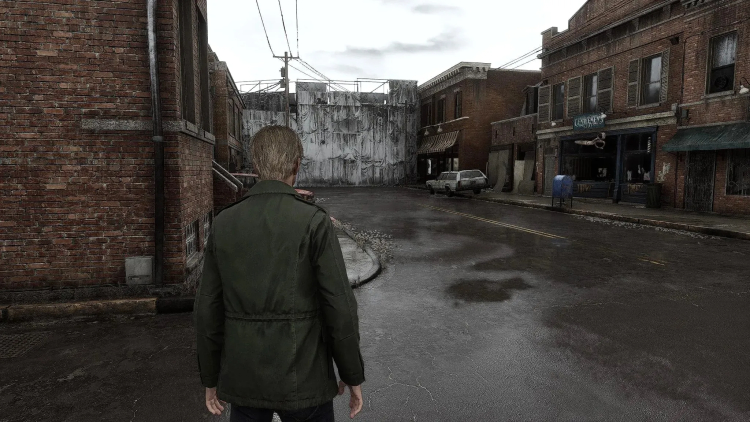
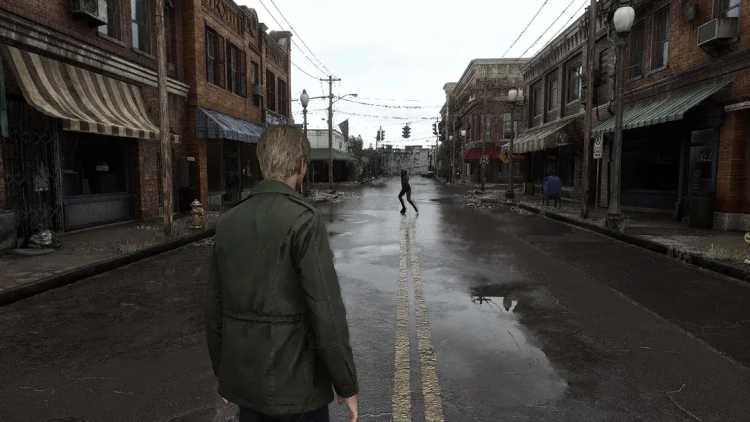
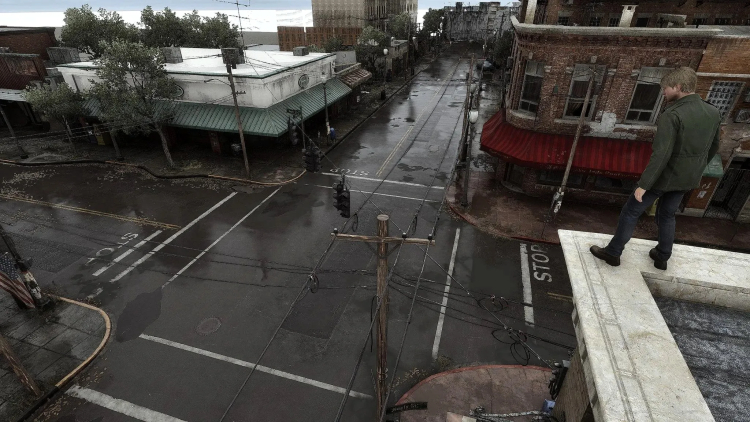
Removing fog from Silent Hill is like removing sand from Dune...
The rain also works perfectly in the game, there are not so many scenes with it, but where it is, the game frames turn into massive canvases. The right work with light and water makes the scene with the pyramid-head on the roof of the hospital incredible, and for some reason it reminded me of my favourite scene in Tears in the Rain, where Rutger played just like a god=)
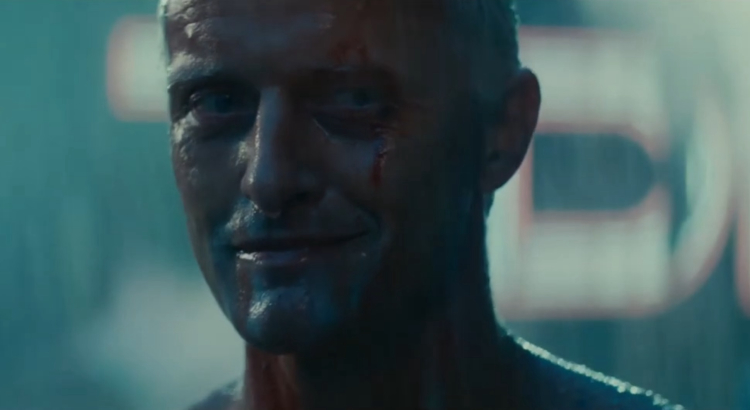
The pyramid on the pyramid head is monumental, as if it goes back to something ancient, like a ziggurat, an unshakable symbol of power, like a deity
COLOUR SEGMENTATION
Colour segmentation also plays an important role, as this tool is used here as a visual divider for different levels of interaction with the player. For example, the use of yellow, which I think is partly inspired by the work of Zdzislaw Beksinski, whose paintings also feature a lot of empty space and pressurised environments.
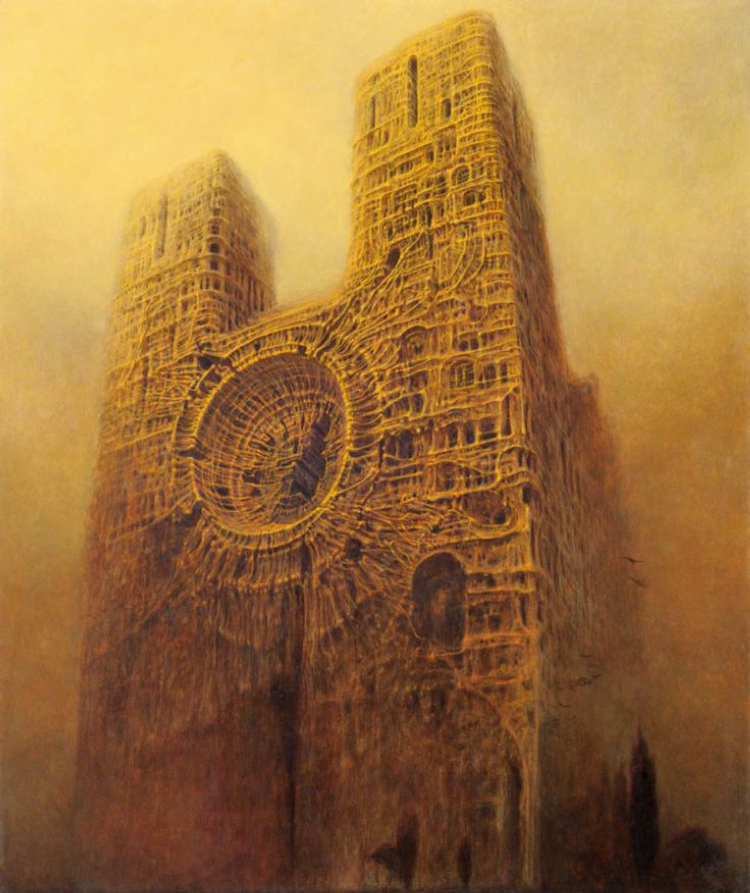
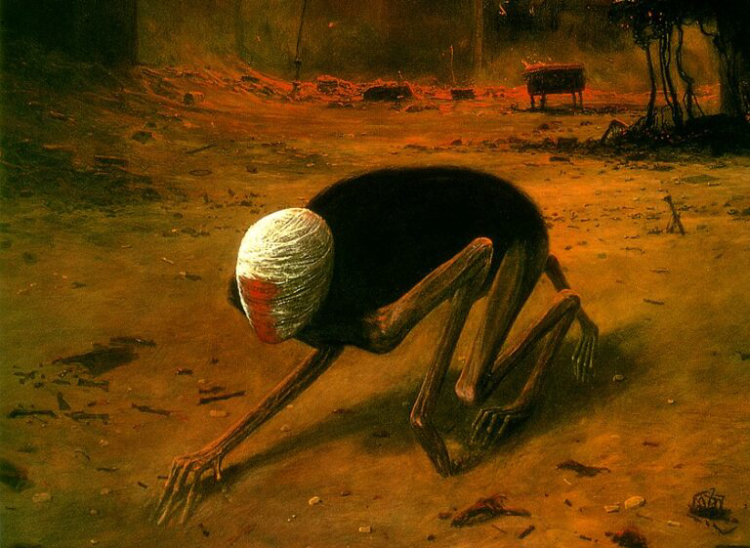
From the point of view of directing, it is a really effective solution to highlight the narrative places with a separate colour. Yellow and red contrast quite strongly with the main palette, which makes it much easier to remember the hero's movements around the world. Yellow is the colour of the afterlife, and red is the colour of savegame and important objects, such as a light bulb:
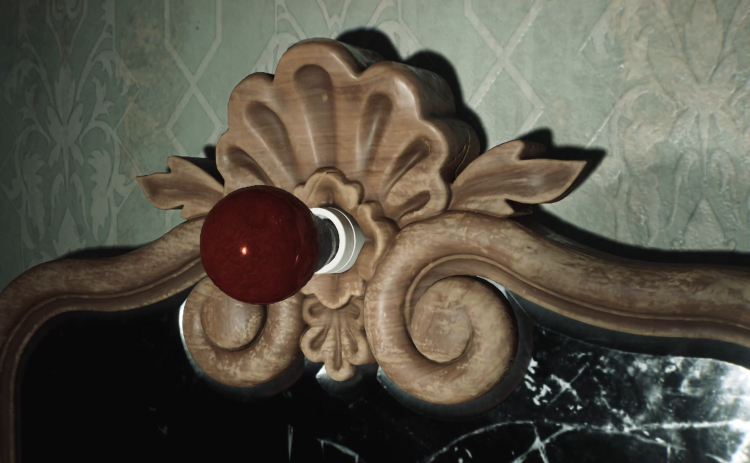
red doors leading to story locations:
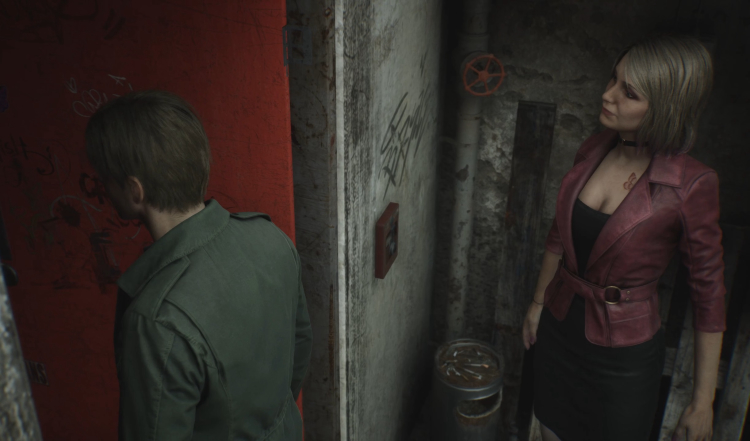
or, as here, James finding the keys to room 202 on a red cloth:
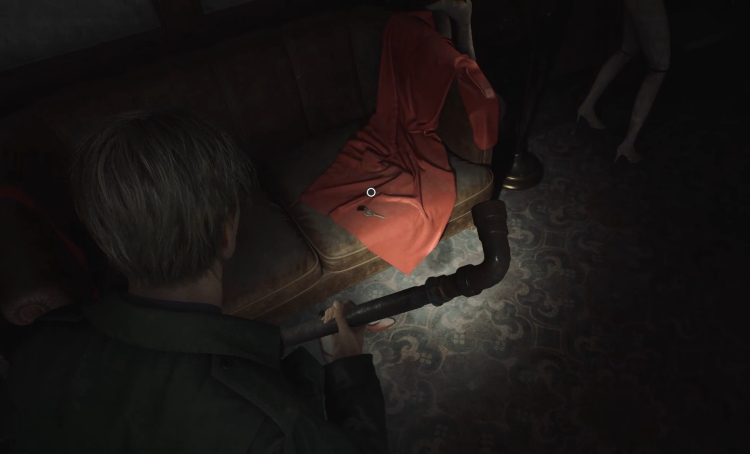
THE EYES ARE THE MIRROR OF THE SOUL
Anyone who has ever worked with animation will confirm how difficult it is to recreate the eyes. The eyes are the mirror of the soul, and not even every actor can do a great job with their eyes. The most striking examples I can think of are Rutger Hauer from Blade Runner, Choi Min-sik from the Korean film Oldboy, or Tom Hardy as Bane.
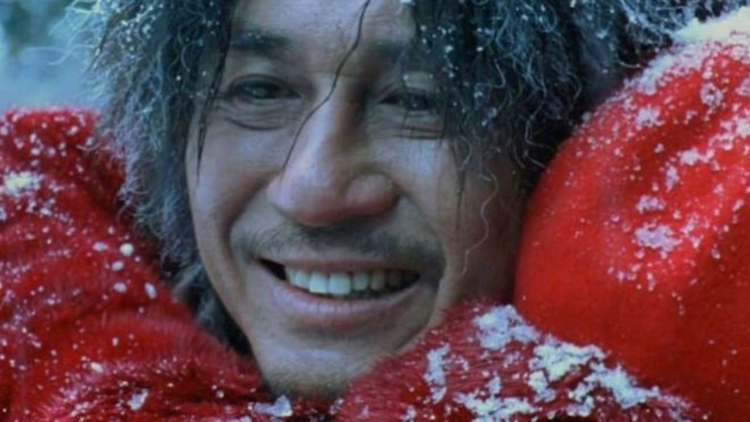
And in animation, it's many times harder to do. But the remake managed to do it. If in general there are some questions about the character animations in the game, the eyes are perfectly done.
Especially Angela's eyes. Her empty, lost look perfectly conveys the state of this unhappy girl. She is always somewhere else, in her thoughts, in her own personal hell...
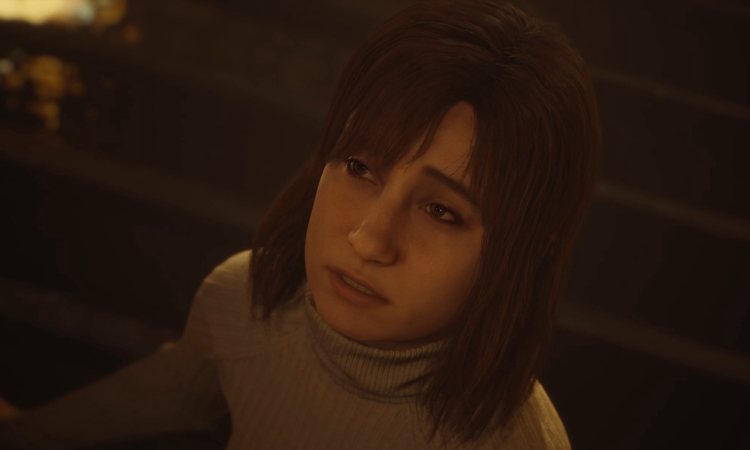
It is through the eyes that we learn about James's state of mind - fear, uncertainty, confusion or redemption...
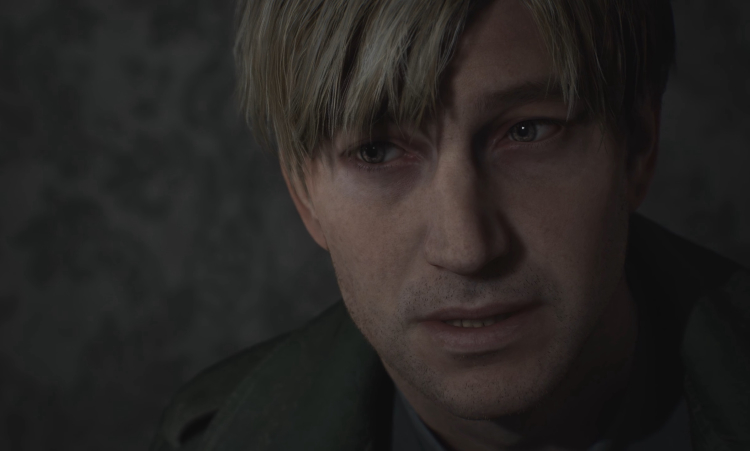
SOUND
However, everything I said earlier would not have worked so well if it were not for the sound. And I'm not just talking about the incredible music composed by Akira Yamaoka, but also about the sound design.
If anything, there's an interesting video on the official Silent Hill channel about how sound design uses sound and silence to better convey fear, tension, and a sense of psychological horror.
TO SUM UP.
We can talk about Silent Hill for a very long time, for example, I didn't mention the moment after the battle with Eddie, when James is swimming on Toluca Lake, and there is only fog around him, which makes the shot focused on James and his feelings, thoughts about being a killer...
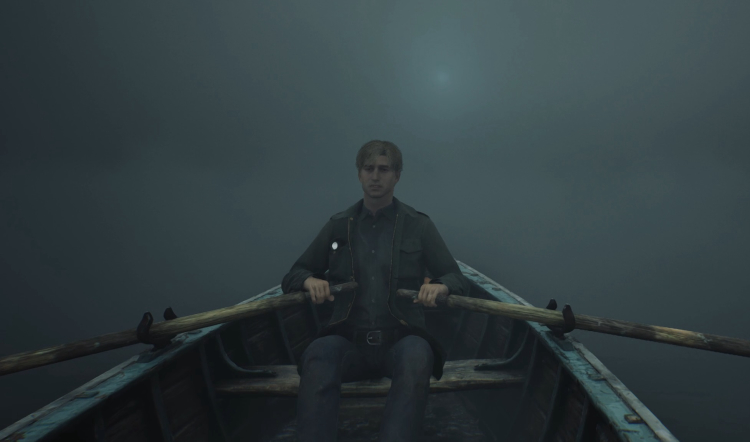
Or sometimes the incredible detail of the game, like a map soaked after the rain, James's fingernails growing and getting dirtier as you play the game, or cockroaches scattering in the light of a flashlight... There are many tools that enhance the player's immersion in the world of Silent Hill, making it truly alive. And it would take hours to list them all.
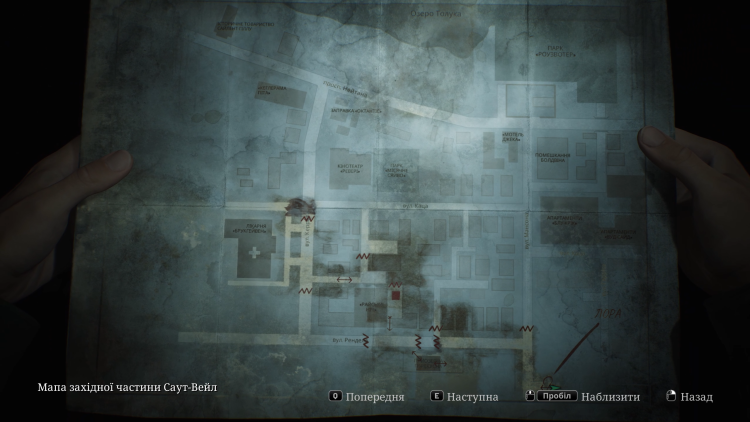
Art is not static, it continues to evolve and combine more and more recognisable elements, because as Kirby Ferguson said, "Everything is a remix".
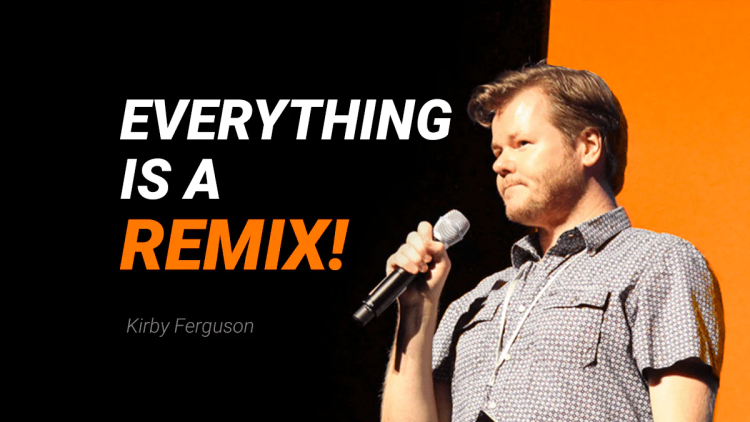
Silent Hill is definitely a work of art that tells its story through sensations. And in the ending, you may not need an answer to the question of what happened next, whether James leaves Silent Hill with Laura or a UFO flies to him, it doesn't matter, because the game world continues to live beyond the screen, even after the credits have started
5 Free Cases, Daily FREE & Welcome Bonuses up to 35%


EGAMERSW - get 11% Deposit Bonus + Bonus Wheel free spin
EXTRA 10% DEPOSIT BONUS + free 2 spins

Sign up now and get 2 FREE CASES + 5$ Bonus
3 Free Cases + 100% up to 100 Coins on First Deposit


Comments